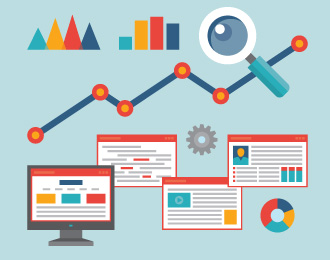SIX Questions and SIX Steps to Through-the-Roof, Human-Centric BI and Metrics-Driven Results

When considering a BI solution, focus on a human-centric approach to software design. The business is comprised of people (not machines) and software solutions must satisfy user needs, rather than focusing on a particular platform, framework or technology. This human-centric approach is critical to creating any kind of software or interface, but especially so when one considers business intelligence (BI) user interfaces and dashboards. Key Performance Indicators and metrics are key to business success but ease-of-use and intuitive displays, reporting and personalized dashboards are crucial if users are to leverage, and optimize BI solutions, to get the most out of data and information. But, showing the data is not all there is to design. You must show the data in a way that is intuitive and meaningful to users, no matter what their role, focus, function, or skill level.
Ease-of use and flexibility is important, but when one considers the many ways in which a user will leverage business intelligence, it is also important to think about the type of metrics, analysis and reporting the users will need. Yes, these factors complicate the design process, but they are central to the success of a BI solution and the success of BI customer businesses.
Here are six critical questions to answer when defining required metrics and the interface for user dashboards and displays:
1. Do you know the identity and roles of the users who will use the dashboard?
2. Do you understand the specific, detailed objectives of the users, and how they will use the dashboard?
3. Are the metrics you provide meaningful to the users and the organization?
4. Do the users understand how the metrics will align with objectives to measure their individual or department success?
5. Is there an overall strategy within the company/team driven by the results of the metrics and the dashboard?
6. If there is a strategy, do your metrics and accompanying visualizations and displays immediately point to the steps to be taken?
If you answered ‘no’ to any of these questions, you need to do your homework, before you establish metrics, select a data visualization method or choose a BI solution for your business.
When a business selects a software solution, it often looks at features, without considering how the software suits the existing business processes or how it will support the future requirements of the organization. No packaged BI software solution can anticipate and satisfy every requirement of a specific organization. That is why the business must first understand how it wants to use the software, what type of metrics it will establish, monitor and manage, and how the solution must flex to the needs of individual users, and then select a solution that is flexible enough to meet its current and future needs.
Look for a self-serve, mobile business intelligence solution that provides personalization features, so that every user can see and manage data in a way that is meaningful to them. Select a BI suite that allows for future growth and changes in business requirements, key performance indicators (KPIs) and strategic, operational and tactical metrics. In other words, the best BI solution will always be one that is designed with a human-centric focus and allows the business to use established business processes and create a unique environment that supports the users and the business bottom line.
Put simply:
1. Understand how the organization works (workflow, processes)
2. Understand the user need for specific data and how they will use that data
3. Understand the need for personalization and ease-of-use
4. Establish metrics that accurately measure success at the corporate, division, department, team and individual level. Metrics MUST correlate to, and measure, objective business results.
5. Choose a data visualization that will best suit the metrics you have established and clearly illustrate results
6. Select a BI software product that will meet these requirements and the need for future flexibility


 Sahil
Sahil








